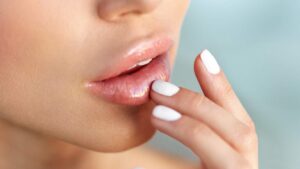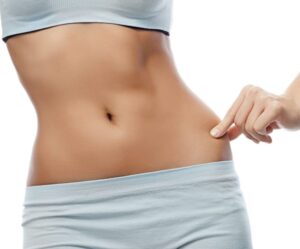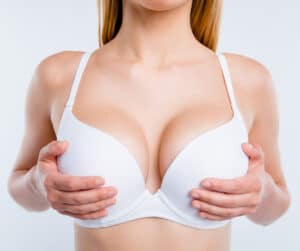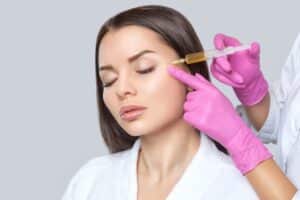Key Takeaways
-
Facial fat transfer, a cosmetic procedure within plastic surgery, is tailored to rejuvenate or enhance aging facial features by using the patient’s own fat, making it a natural and biocompatible choice compared to dermal fillers.
-
Understanding your own anatomy and how it relates to the expected outcomes of cosmetic procedures, including plastic surgery, is crucial; a thorough consultation with a healthcare provider, specifically a plastic surgeon, can help set realistic expectations for any surgical procedure.
-
Pre-procedure steps for facial rejuvenation procedures, including a comprehensive health assessment, indications, and preparation guidelines with the necessary equipment, are essential for a smooth intervention process and optimal results.
-
The technique, a surgical procedure in plastic surgery for facial rejuvenation, involves extracting fat from one part of the body, purifying it, and then injecting it into the skin of the face, which requires precision and expertise for natural-looking results.
-
Being aware of potential complications, such as anesthesia reactions, and discussing safety measures for procedures like surgery at recipient sites with your healthcare provider minimizes risks and contributes to a safer procedure experience.
-
Post-procedure care and follow-up appointments after surgery, especially for facial rejuvenation involving skin and anesthesia, are key to enhancing healthcare outcomes, ensuring the longevity of the results, and addressing any concerns promptly.
Understanding Anatomy and Physiology
Facial Compartments
The skin on the face contains distinct fat compartments in the superficial area that play a crucial role in its appearance and facial rejuvenation. Recognizing these sites allows for targeted skin rejuvenation during a facial fat transfer surgery procedure. This precision in surgery ensures the restoration of lost volume in specific sites, enhancing the overall facial structure through the use of a cannula, targeting the face skin.
Aging leads to volume loss in these compartments, altering the face’s youthful contours through reduced skin and fat, which facial rejuvenation surgery addresses. The procedure addresses this issue by carefully injecting fat into these targeted sites on the face, promoting a more balanced and natural look, thus facilitating facial rejuvenation surgery.
Aging Effects
Aging affects both facial volume and skin elasticity. Over time, the depletion of adipose tissue (fat) and collagen in the face results in sagging skin and wrinkles, leading to considerations for facial rejuvenation surgery. These changes emphasize the need for volume restoration, including fat and surgery, in facial rejuvenation to maintain a youthful appearance on the face.
The process of facial rejuvenation, not only fills in wrinkles with fat surgery but also adds volume where it has been lost due to aging, in ml. This approach helps in recapturing the essence of younger-looking skin by improving its texture and firmness, potentially through facial rejuvenation that may involve reducing fat by ml.
Autologous Fat Role
Autologous fat, harvested from the patient’s own body, may be key in mimicking natural facial contours with ml. Unlike synthetic fillers, this fat, which may be measured in ml, integrates with existing tissues, supporting long-lasting results.
Its compatibility with the body may reduce risks of rejection or adverse reactions related to fat. Furthermore, autologous fat transfer may encourage collagen production, aiding in skin rejuvenation beyond just adding volume.
Steps Before the Procedure
Medical Evaluation
Before undergoing a facial fat transfer, patients may complete a medical evaluation. This step is crucial to ensure there are no contraindications, including fat deposits, that may affect the outcome of the surgery. The surgeon may review the patient’s medical history and conduct necessary exams. They look for conditions that may complicate the procedure or recovery, such as fat.
Patients should disclose all health issues and medications. This transparency may help in tailoring a safe and effective treatment plan.
Informed Consent
Obtaining informed consent is another vital step before surgery. During this process, the surgeon may explain all aspects of the procedure, including fat removal. They cover risks, benefits, and set realistic expectations. Patients learn about potential complications and how these risks, which may include fat-related issues, compare to the benefits.
This discussion ensures patients, who may be considering fat removal, make well-informed decisions about proceeding with the cosmetic procedure.
Preparation Steps
Preparation for facial fat transfer may involve several steps to minimize risks and improve outcomes. Patients may need to adjust their diet or medication regimen weeks before the surgery. These changes may help reduce bleeding and fat swelling after the procedure.
Skin preparation is also essential. It may include specific cleansing routines or using particular products to ensure the skin is in optimal condition for surgery. Such preparations may contribute significantly to a successful facial rejuvenation process, including fat management.
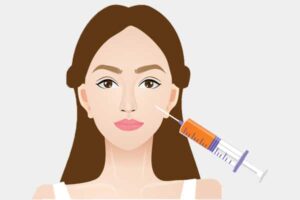
Executing the Technique
Harvesting Fat
The first step may involve using a suction machine to extract fat from donor areas. This process requires precision to ensure lasting results. The team selects the best areas for harvesting, focusing on those with adequate fat stores, which may include various regions.
Fat is then prepared through centrifugation. This may separate the viable fat cells from the liquid components. It’s crucial for enhancing the survival rate of the transferred fat, which may improve its effectiveness.
Preparing Recipient
For recipient sites, cleanliness and precise marking are vital. The team may use sterile equipment and syringes to inject the fat. They choose sites like marionette lines or cheeks that need fat volume.
The solution is carefully injected at multiple levels, including into the fat, to ensure uniform distribution and natural-looking results. Elasticity of the recipient site plays a significant role in how well it will accommodate the new fat cells.
Injection Technique
Injection technique is key to success. The surgeon uses fine needles for minimal discomfort and accurate placement in fat tissues. They aim for an even spread of fat across targeted areas to avoid lumps or irregularities.
Monitoring during injection ensures patient safety and satisfaction with the outcome. Sedimentation technique might be used to refine the fat before injection, guaranteeing only healthy, viable cells are used.
Potential Complications and Safety
Common Risks
Facial fat transfer, while generally safe, carries potential risks like infection, asymmetry, or overcorrection. These complications arise when the technique is not executed properly or post-procedure care is neglected. Using sterilized equipment and ml syringes precisely can minimize infection risks. Asymmetry and overcorrection, on the other hand, demand a surgeon’s expertise in achieving balance and natural-looking results.
Patients must choose experienced surgeons to reduce these risks significantly. Such professionals understand how to evenly distribute fat cells using the right volume of fat in ml syringes.
Blood Flow Issues
Poor blood flow or fat nodule formation signals trouble post-procedure. These symptoms often indicate that the transferred fat is not integrating well with the surrounding tissues. Immediate medical attention can prevent more severe complications like blindness or fat contour irregularities.
It’s crucial for patients to monitor their recovery closely and report any unusual signs to their doctor promptly.
Post-Procedure Care
Effective post-procedure care plays a pivotal role in enhancing safety and reducing complication risks. Patients should follow their surgeon’s advice on managing swelling and promoting proper healing. This includes avoiding strenuous activities that may disrupt the settling of transferred fat.
Enhancing Healthcare Outcomes
Multidisciplinary Approach
A multidisciplinary team plays a crucial role in optimizing facial fat transfer outcomes. Surgeons, nursing staff, and technicians must work together seamlessly. This collaboration ensures comprehensive care from pre-surgery consultation to post-operative recovery.
Patients benefit greatly from this teamwork. It leads to more personalized care plans and better management of expectations regarding the procedure’s results.
Follow-Up Care
Regular follow-up appointments are essential for monitoring the healing process. They allow healthcare providers to address concerns promptly and adjust care plans as needed. This proactive approach helps in achieving the desired facial rejuvenation while minimizing potential fat-related complications.
Follow-ups also provide an opportunity to discuss any changes in the patient’s condition, including weight loss or gain, which could affect the longevity of the results, especially concerning fat.
Ongoing Research
Continual research and training in facial fat grafting techniques are vital. They contribute significantly to improving patient satisfaction and outcomes. Innovations in this field can lead to more efficient procedures with longer-lasting results.
Summary
Facial fat transfer offers a promising path to rejuvenate your appearance, blending science with artistry to achieve natural-looking results. By understanding the anatomy and physiology involved, preparing thoroughly before the procedure, executing the technique with precision, acknowledging potential complications, and aiming for enhanced healthcare outcomes, you’re setting the stage for success. This procedure not only promises aesthetic enhancement but also emphasizes safety, personal well-being, and fat reduction.
Remember, choosing the right professional is crucial. Look for someone with extensive experience and a track record of satisfactory outcomes in facial fat transfer. Your face is your most visible feature; investing in it with care and expertise can yield transformative results. Ready to take the next step? Reach out to a qualified specialist today and explore how facial fat transfer can unlock a refreshed, more youthful you.
Frequently Asked Questions
What is a facial fat transfer procedure?
A facial fat transfer involves relocating fat from one part of the body to the face to enhance volume and reduce signs of aging. It’s a natural-looking, minimally invasive option for facial rejuvenation using fat.
How does understanding anatomy and physiology help in a facial fat transfer?
Understanding anatomy and physiology ensures the fat is transferred to areas that will support its survival and integration, maximizing the aesthetic outcome while minimizing risks.
What are the steps before undergoing a facial fat transfer?
Before the procedure, patients typically undergo a health evaluation, discuss expectations with their surgeon, and may need to avoid certain medications or supplements to reduce bleeding risk.
How is the facial fat transfer technique executed?
The technique involves three key steps: harvesting fat from another area of the body, preparing it for transfer, and then carefully injecting it into targeted areas of the face to achieve desired fullness and contour.
What potential complications should I be aware of with facial fat transfers?
Potential complications include infection, asymmetry, over or under correction, and rare cases of fat necrosis. Choosing an experienced surgeon can significantly minimize these risks.
How do facial fat transfers enhance healthcare outcomes?
Facial fat transfers offer long-lasting results without the need for synthetic materials, improving patient satisfaction with their appearance in a relatively safe manner when performed by qualified professionals.





